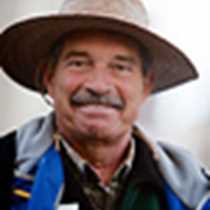Normandy, France
Sixty years after the tremendous military happenings in this part of France, the feeling for its history is very strong. Many tourists of the world come to see the land and the beaches where the Allies landed in July of 1944, in one of the greatest military conflagrations, called D-Day. The Allied forces landed on different beaches of Normandy, and were met by big defenses of the Germans, among which were these Chzeck Skoda 152mm cannons. Originally they had no reinforced concrete bunkers, but eventually these were built to harbour the big guns. During the ensuing days of the invasion, they were put out of commission.
During our second day at Normandy we also visited different points of the area, including the bridge called Pegassus, taken in the first hours of that day by the British. This bridge was of exceeding importance, as it was a key to transport across the River Orne and access to Caen. We then visited the town of Arromanche, the site where a great amount of the necessary war equipment for the Allies was disembarked, after having an artificial harbour created with hollow concrete caissons that were sunk in the shallow waters of the area. From here a series of floating dockways were built to the land.
Lunch was enjoyed at the four-star hotel Chateau de la Cheneviere restaurant in Port en Bassin. And again off to see the small town of Ste. Mere l’Eglise, the first town to be freed from the Germans, where we saw a dummy of the paratrooper John Steele from the 82nd Airborne division, who got caught on the church belltower, when his division overshot their dropsite. At this point we tasted and enjoyed some Calvados apple cider, one of the specialties of the place. Earlier we had visited the American cemetery at Omaha Beach, a very moving experience.
Sixty years after the tremendous military happenings in this part of France, the feeling for its history is very strong. Many tourists of the world come to see the land and the beaches where the Allies landed in July of 1944, in one of the greatest military conflagrations, called D-Day. The Allied forces landed on different beaches of Normandy, and were met by big defenses of the Germans, among which were these Chzeck Skoda 152mm cannons. Originally they had no reinforced concrete bunkers, but eventually these were built to harbour the big guns. During the ensuing days of the invasion, they were put out of commission.
During our second day at Normandy we also visited different points of the area, including the bridge called Pegassus, taken in the first hours of that day by the British. This bridge was of exceeding importance, as it was a key to transport across the River Orne and access to Caen. We then visited the town of Arromanche, the site where a great amount of the necessary war equipment for the Allies was disembarked, after having an artificial harbour created with hollow concrete caissons that were sunk in the shallow waters of the area. From here a series of floating dockways were built to the land.
Lunch was enjoyed at the four-star hotel Chateau de la Cheneviere restaurant in Port en Bassin. And again off to see the small town of Ste. Mere l’Eglise, the first town to be freed from the Germans, where we saw a dummy of the paratrooper John Steele from the 82nd Airborne division, who got caught on the church belltower, when his division overshot their dropsite. At this point we tasted and enjoyed some Calvados apple cider, one of the specialties of the place. Earlier we had visited the American cemetery at Omaha Beach, a very moving experience.




